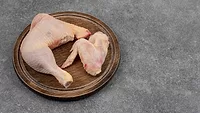USDA-FSIS Releases New Guidelines on Controlling Salmonella and Campylobacter in Raw Poultry

The U.S. Department of Agriculture's Food Safety and Inspection Service (USDA-FSIS) has revised its guidelines to help poultry establishments control Salmonella and Campylobacter in raw poultry.
USDA-FSIS has changed the guidelines in light of new scientific and technical information, public comments received on the 2015 guideline, and its decision to issue two separate guidelines: one on controlling Salmonella and the other on controlling Campylobacter.
The guidelines include "best practices" recommendations that poultry businesses should follow to reduce Salmonella and Campylobacter contamination of raw poultry.
On December 16, 2015, USDA-FSIS published a Federal Register notice (80 FR 78166) promoting the availability of and opportunity to comment on a revised agency compliance guideline for controlling Salmonella and Campylobacter in raw poultry. This change was the fourth edition of the guideline that USDA-FSIS had developed to help establishments that slaughter or process raw poultry products minimize or prevent the risk of the two pathogens in their business operations.
USDA-FSIS updated the guideline contents with the most recent best practices, supported by peer-reviewed literature and analyses of USDA-FSIS data. Updates include how to use neutralizing agents in sampling to prevent carryover of antimicrobial substances and a current list of antimicrobials for business use. Also include are improvements in the information on preharvest practices, with a comprehensive revision of the litter/bedding section. With the update guideline, establishments now have practical options for reducing and inhibiting the growth of pathogens commonly found in raw poultry.
In response to the comments it received, USDA-FSIS reviewed the recommendations in the former version of the guideline and assessed each section for utility and effectiveness. The resulting changes include a complete revamp of the sections on litter and bedding and updates to USDA-FSIS data on the rate at which Salmonella or Campylobacter contamination can be attributed to source materials of different compositions.
In addition, USDA-FSIS is now issuing the revised document as two separate guidelines: one focused on Salmonella control and the other on Campylobacter. Comments will no longer be accepted on these guidelines, but USDA-FSIS will update the documents as necessary if new information becomes available.
Looking for quick answers on food safety topics?
Try Ask FSM, our new smart AI search tool.
Ask FSM →







